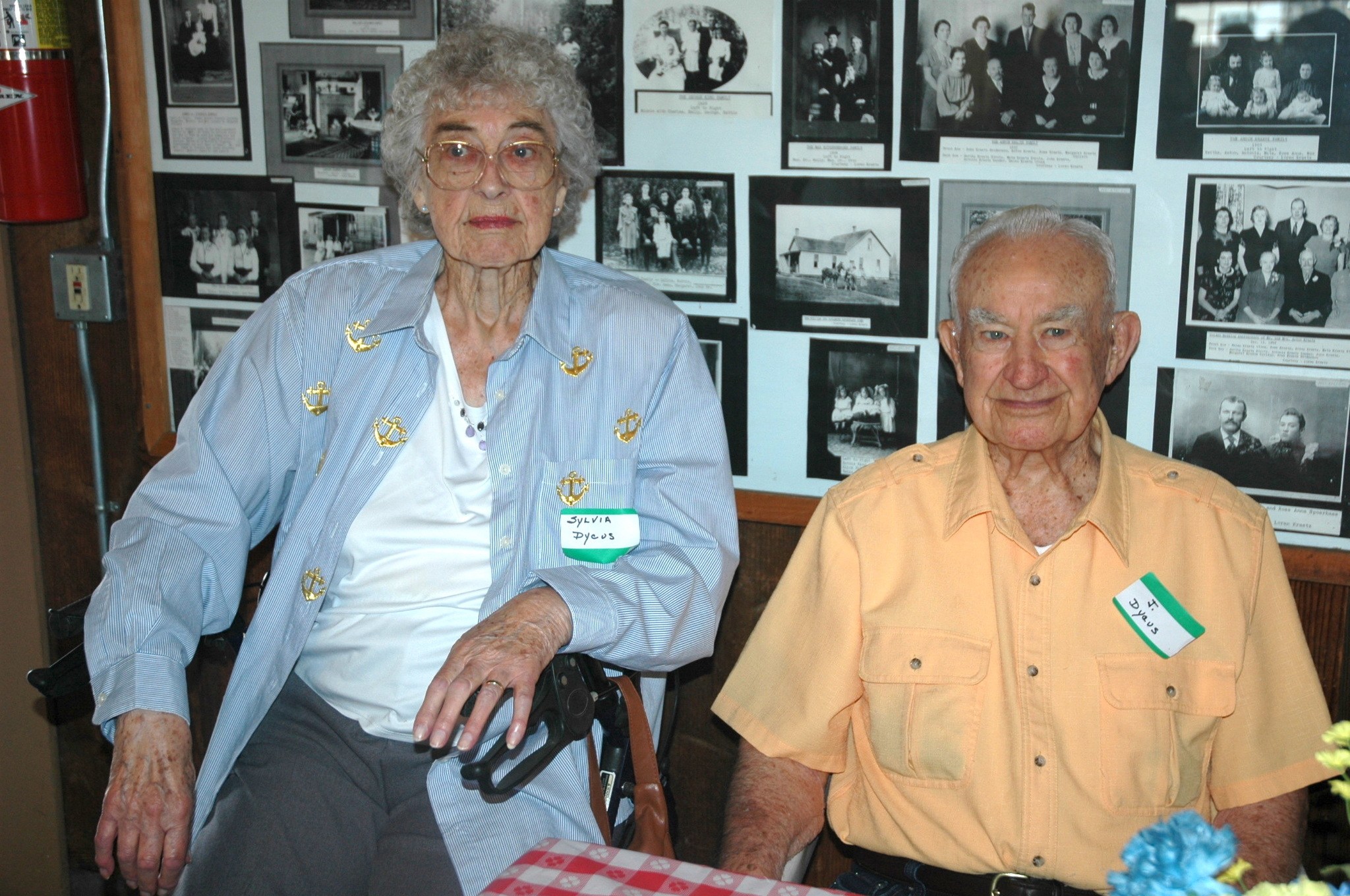ARLINGTON — The Stillaguamish Valley Pioneer Association celebrated its official centennial, as recognized by the state, even as it convened its 104th annual picnic Aug. 21.
Association president Myrtle Rausch, who was re-elected to her post during the meeting following the potluck lunch, guided attendees through a visual history of the association with a slide show that included photos of picnics at the Schloman farm grove in 1912 and the Wrage farm in 1915, before they settled on the Birckenmeyer property in 1916.
Rausch recounted how the original Pioneer Hall was built in 1923 for $2,000, before asking if anyone remembered the gazebo that appeared in another black-and-white photo.
“That wasn’t taken down until the 1970s,” association vice president Loren Kraetz said.
The succession of pictures that followed documented the stump house’s move from downtown Arlington in 1934, the planting of trees on the property in memorial to the pioneer families from 1945-54, the building a pond after World War II, the installation of salmon ladders in 1962, the construction of the Pioneer Museum in 1988 and the placement of the veterans memorial in 2000.
Rausch noted the pioneer businesses that survived, including Arlington Hardware and the Arlington Times, and those that had gone by the wayside, including the Jordan coal mine, and the Dorgan and Verd mills. The logging industry was once operating at such a peak that one old photo showed the river practically choked with shake bolts. And the first milking machine in the county was on Grimm farm, Rausch said.
Then, Arlington Mayor Barbara Tolbert looked ahead, touting potential progress to come, during her annual address to the association, reporting on the Arlington and Darrington communities’ joint success in the America’s Best Communities competition.
Tolbert recalled how the Arlington/Darrington team was but one of 350 entrants when the contest started in June of 2014, before being winnowed down to 50 quarter-finalists who received $50,000 each. Of those, 15 semifinalists met in North Carolina in April, where they were narrowed down to eight finalists who received $100,000 each.
Tolbert explained that the contest seeks to invest in rural American communities while staying true to their culture.
“Many of those old jobs that we just saw in those photos are no longer with us,” Tolbert said. “It’s time to think about the future.”
Tolbert pointed out that Darrington would have fallen shy of the ABC contest minimum population requirement of 5,000, so Arlington joined up so both could benefit.
“As was shown after the Oso slide, this is one of the most resilient places in America, and that’s because of its people,” Tolbert said.
Among the initiatives the Arlington/Darrington team proposal:
• Public Wi-Fi hot-spots.
• Consultations with small businesses to help them better market themselves.
• A shared space for inventors and tools for homeowners and merchants to improve curb appeal.
• The appointment of a youth council to give kids a voice and keep them invest in the community.
• Public-private partnerships to make improvements to the two towns’ main streets.
• The development of “pocket parks” to beautify small spaces.
• The creation of recreation guides to attract tourists.
• More immediate communication through social media.
• A memorial bike ride in March of next year, on the third anniversary of the slide.
“The people and families who have suffered as a result of the slide have received care and counseling, and most have been rehoused by now,” Tolbert said. “The road has been rebuilt, and our two communities are stronger than ever, as is the relationship between us. We’re building a solid future for twenty to thirty years from now.”
The Pioneers looked to their future for the next year by installing secretary Cheryl Lovgreen, pioneer treasurer Sharron Knutson and museum treasurer Terry Legare.
The Pioneers also honored their past by recognizing the oldest living women born in the valley — Dorothy Grimm and Ruth Yost, both 92 — and the oldest living man, with Harley Robb again claiming the title at 94. Sylvia and J.Y. Dycus again claimed the title of longest-married couple with one born in the valley, at 72 years.







